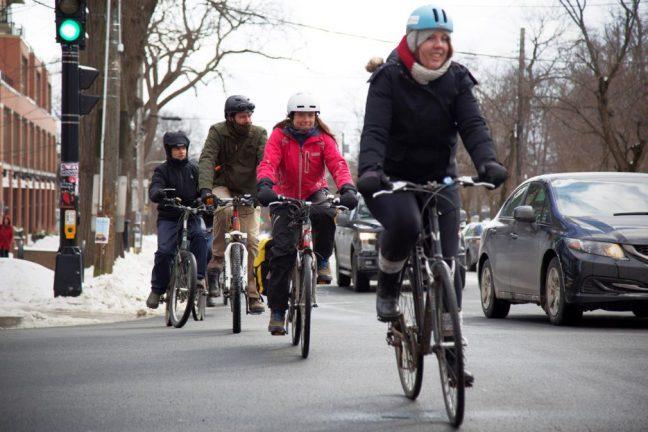A study from the Initiative for Health-Oriented Transportation by the Global Health Institute found that commuting by bike or walking rather than by car showed strong benefits on human health and the environment.
Madison is known for a thriving bicycle infrastructure, and People for Bikes ranked the city eighth out of 455 midsize cities best for biking in the U.S. in 2022.
According to the Global Health Institute study, approximately 20,000 annual deaths due to chronic disease could be averted if U.S. metropolitan areas increased their cycling percentage to 6% of trips, which is the rate seen in Madison. If U.S. cities could meet this benchmark, it would also reduce the cases of cardiovascular disease by 28,000 per year and the cases of diabetes by 22,000 per year.
Studies from the CDC and the U.S. Department of Health and Human Services show biking is an effective way to improve overall physical fitness and human health.
The prevalence of obesity in the U.S. has climbed from 30.5% in 2000 to 42.4% in 2018, according to the CDC. Increases in exercise through biking could significantly reduce that statistic. The CDC also found commuter and recreational cycling improves cardiovascular health and reduces risk of chronic disease.
Biking is also a low impact form of exercise which allows older adults and those with weak or damaged joints to exercise safely.
Additionally, a 2015 University of California study found more bike-friendly communities had higher levels of mental health and wellbeing compared to cities where few residents utilize bikes.
University of Wisconsin student Rianna Dowds said she opts for a bike over a car, which allows her to get to class faster because she can avoid all the construction she would have to go through in a car.
Another UW student, Bella Roberts, said she likes biking to work because it provides her with an easy way to get there while also getting some exercise.
According to a 2019 study by Susan C. Anenberg and colleagues, particulate matter and ozone pollution from tailpipe emissions cause an estimated 385,000 deaths around the world each year. Increases in commuter biking over vehicles would lead to a reduction in vehicle emissions.
The Initiative for Health-Oriented Transportation estimated increasing commuter trips to 6% by bikes would supply approximately $1.2 billion each year in global benefits due to climate change prevention.
This summer, Dane County announced awards totaling $482,516 for the Dane County PARC and Ride grant recipients. These awards were given to communities whose projects promoted safe, destination-oriented regional bike trails in Dane County.
Senior landscape architect for the Dane County Land and Water Resources-Parks Division Chris James said the projects had to be regional in nature and serve multiple populations. One of the reasons Dane County is committed to expanding the regional biking network is to fit the needs of the increased number of bikers on the trails, James said.
“Obviously with the huge increase in gas prices, more and more people are using bikes for transportation in addition to just recreation,” James said. “So, completing this regional bike trail network is really important to give people a non-motorized option.”
But a rise in pedestrians can also create potentially dangerous situations with increased volume on the roads and trails. A study on Bicycle and Pedestrian Crashes by the Madison Planning board found there were 1,350 bicycle and pedestrian crashes from 2011-2015, with the City of Madison accounting for nearly 80% of crashes.
UW civil engineering researcher Boris Rodriguez studies bike safety on roadways. He said there are a few contributing factors that affect roadway and intersection safety.
“Some things that contribute to an intersection being less safe are visibility and exposure in terms of how many vehicles go through the intersection,” Rodriguez said. “If it’s a highly congested or highly used trail by bikes, that increases the chance of seeing a crash there.”
Rodriguez said the City of Madison has taken action by implementing new counter measures to increase biker and pedestrian safety. These measures include a flashing yellow light cyclists or pedestrians to indicate cyclists or pedestrians are going to cross, a designated painted turning area for bikers and buffers to protect bikers from traffic.
It is likely there is a reduction in cars on the roads in Madison due to the number of bikes on the trails, James said.
“Just looking at the number of bikes we’re seeing on our paths and paths in general in Dane County, there has to be a reduction of automobile trips because we’re seeing so many more people using bikes for work commuting and just doing trips that they otherwise might have used a car if they didn’t have the option of using a trail,” James said.
Though there are many benefits to biking such as improved health, cost efficiency and protecting the environment, the real reason for large numbers of bikes on trails in Madison is that people love to ride bikes in Dane County, James said.


